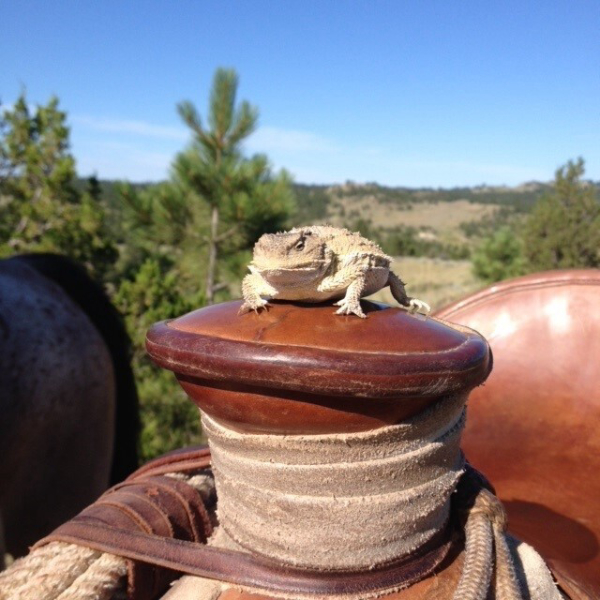
|
Greater short-horned lizard. Horny toad. Mountain short-horned lizard. Phrynosoma hernandesi. Whatever name you call this small knobby reptile by, it is a master of camouflage in its preferred prairie habitat. Many people have never observed one in the wild, and if they have, they may not even know it.
The greater short-horned lizard, Phrynosoma hernandesi, was once considered the second most abundant reptile along the Missouri River in Montana in the late 19th Century, second only to the western rattlesnake. Currently, however, these lizards are considered a “Species of Concern” in Montana due to insufficient data on their population and distribution.
“We have been conducting surveys in eastern Montana to try and determine status and distribution as well as fill in data gaps; however, their elusive nature and cryptic coloration make them extremely difficult to locate,” said Nicole Hussey, FWP nongame biologist in Region 6.
That’s why citizen observations of these lizards have proved helpful in building FWP’s database on them.
“Oftentimes people just accidentally come across one,” Hussey said.
If you do see one, FWP asks you to record the location, get GPS coordinates if possible, and note the date, number observed and take a photo with something in the picture for scale.
To report a greater short-horned sighting, go to fwp.mt.gov/conservation/wildlife-management/greater-short-horned-lizard.
Observations also can be reported to your local FWP biologist.
To learn more about greater short-horned lizards, including what they look like and where they live, click here.
Bioblitz field trips
A statewide short-horned lizard bioblitz involving FWP and partner agencies is running from June 21-28. Participants in the bioblitz can work independently or with a team.
Dress for the weather and wear comfortable walking shoes. Bring your own water or drinks, as well as sunscreen and bug spray.